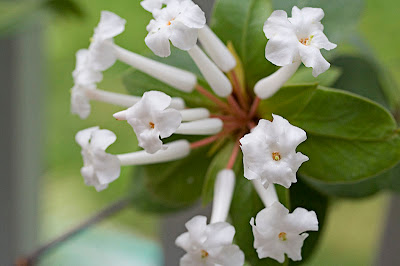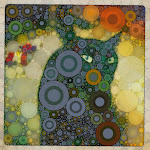Yep, we had one today.
We got out of the house at around 10:30 am and headed into town (or, at least, what passes for a town on the island) and found a great parking spot right in front of the Village Green, which on Saturdays is home to our local farmers' market. We ran into our landlady and chatted a bit, looked at the fresh salad greens, prepared foods, and crafts, all the while listening to some great bluegrass music being played by a duo on the lawn.
We bought some great bacon, made from Berkshire hogs that are grown on the Kitsap peninsula. Hey, they had free samples! Looking forward to breakfast tomorrow, for sure.
Looked at some really beautiful turned wood bowls and boxes. Gorgeous.
Bought a few organic yellow delicious and gala apples from east of the Cascades, then headed over to the pharmacy to pick up a prescription, then on to the produce stand at the main intersection for organic cherries, asparagus, strawberries, and young Walla Walla sweet onions. Ducked inside the restaurant at the same intersection and had some lunch, then took off for a couple of nurseries, where we bought some fantastic plants for an area under a large alder, including a loropetalum, several kinds of ferns, and a new hybrid alstromeria that has intense violet flowers flecked with white.
Traveling further south on the main drag, we went to the historic building that housed the original roasting plant for Seattle's Best Coffee, now home to a healthy grocery store and cafe. They have the only espresso machine on the island that still has the pump handles, and the espresso there is really good. Today we weren't in search of caffeine, though (strange, that), but were signing up for a series of classes on treating various inflammatory ailments through diet. These classes are all the rage on the island this summer, and we know many folks who told us they were worthwhile, so starting in July we'll be making some changes to the way we eat.
We cut west across the island, then up the west-side highway, one of the more scenic and picturesque routes on the island, all the way back to where it rejoins the main road, driving through its many curves and marveling at the lush ferns and other plant life along the way.
Once home, we planted everything we bought today (which almost never happens) and watered it in well. Sat for awhile in our little seating area, admiring the garden, drinking some water, listening to the birds. While working in the garden today, we saw the first zebra swallowtail of the season, so graphic against the dark violet Papaver sommniferum blooms. Lots and lots of bee activity, as well as hummingbird battles over the best blossoms.
We are seeing many more Anna's hummingbirds this year and boy, are they cute. Some are brilliantly colored. We see them feeding, but also perching on several of the trellises we have installed. We've only seen a couple of the larger rufous hummingbirds, though. The Anna's seem to especially love the red and yellow Aquilegia canadensis and the Billardiera longiflora, which has little one-inch tubular bell-shaped flowers, as well as the native Twinberry (Lonicera involucrata).
While the new plants were being irrigated, I made dinner: barbecued baby-back ribs on the grill, those young Walla Walla onions, split and grilled, and a green salad. We had some ginger syrup and Grenadine over ice with club soda, and it was pretty much perfect.
Much like the day itself.








